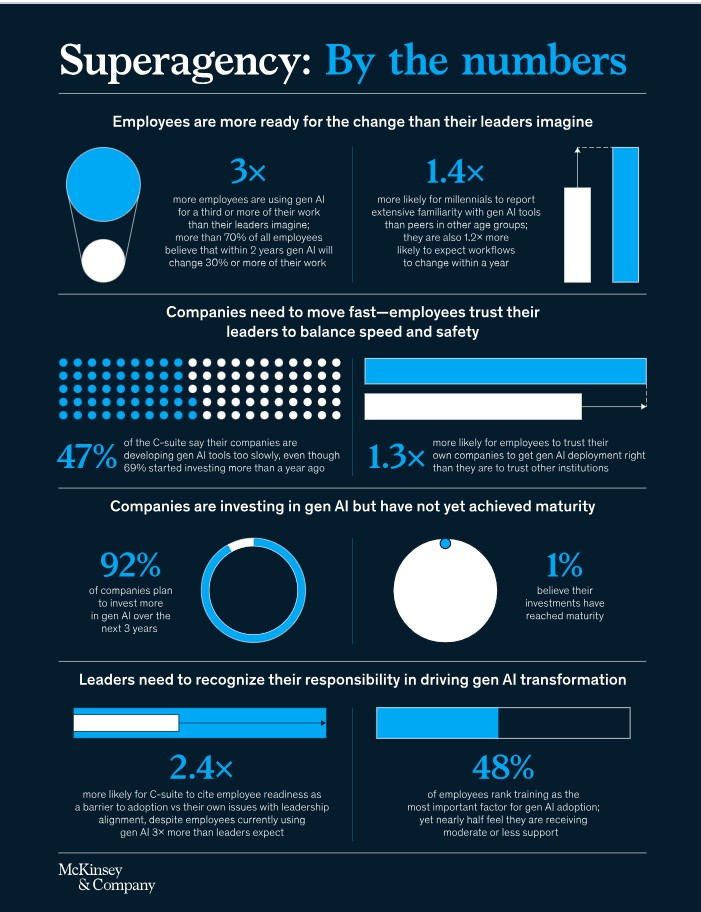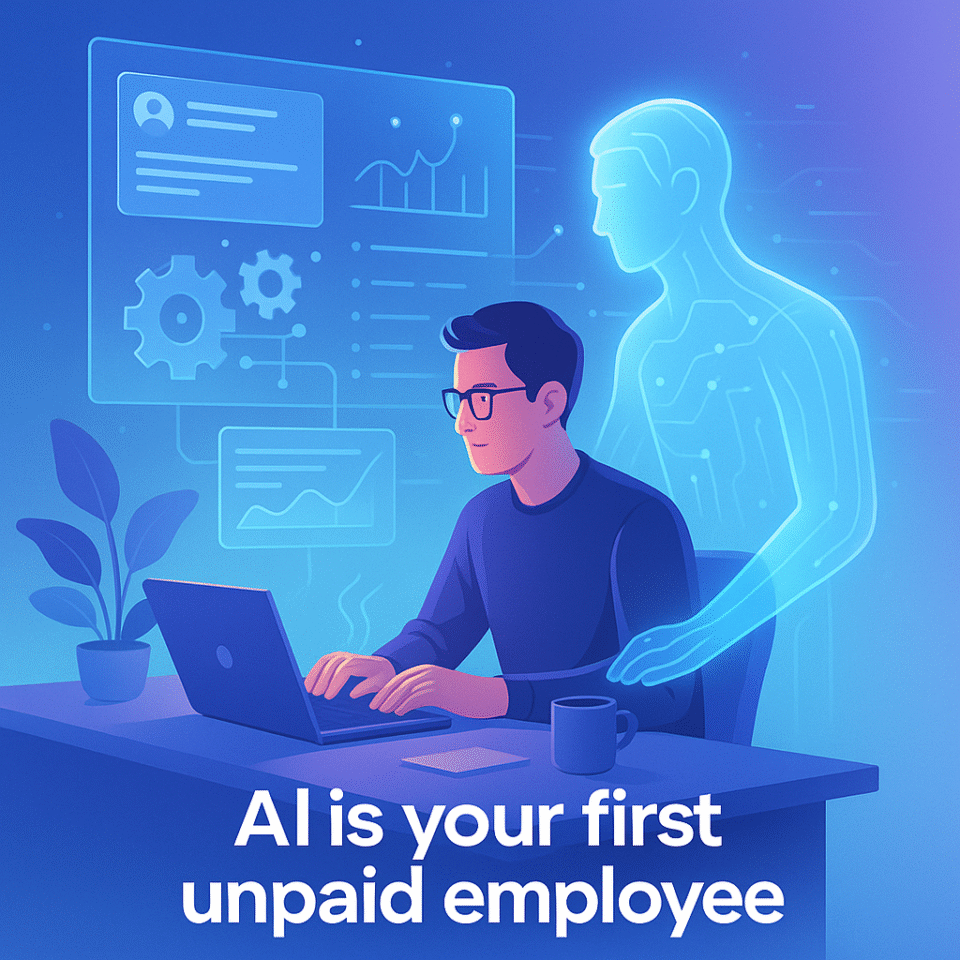Every founder today feels it — the buzz, the noise, the constant flood of AI tools that promise to 10x productivity. Yet for most startups, AI feels like a playground for demos and prototypes, not a proven engine of growth.
But, the real opportunity lies in moving beyond experimentation toward AI revenue for startups, building products, systems, and workflows where AI directly drives customer value and measurable income.
The founders winning in 2025 aren’t chasing hype; they’re building leverage by turning AI capabilities into sustainable business results.
Take Rahul Vohra, founder of Superhuman, for example. When he launched his email productivity platform, it was competing with free, dominant tools like Gmail and Outlook. Conventional wisdom said, “You can’t charge $30/month for email.” Rahul proved them wrong.
By infusing AI into the core of Superhuman — from instant triage and context-aware responses to smart prioritization and AI-generated summaries — he turned email into a luxury experience. Users weren’t just paying for faster inboxes; they were paying for time, focus, and mental clarity.
That shift turned Superhuman into one of the most profitable productivity startups of the decade, achieving thousands of paying subscribers and near-zero churn among power users.
Rahul’s story shows a simple truth: AI, when applied strategically, doesn’t just optimize — it monetizes.
From Overwhelmed to Optimized: The Founder Shift
Startup founders are natural multitaskers — part visionary, part firefighter, part operator. But there’s a limit to how many hats you can wear before growth stalls.
Rahul Vohra faced this firsthand while scaling Superhuman. Traditional workflows around customer onboarding, feature testing, and email analytics were slowing the team down. The answer wasn’t to hire faster — it was to automate intelligently.
Superhuman began using AI internally to analyze onboarding friction, predict user drop-off points, and even flag moments when users were likely to churn. The results were dramatic: onboarding time dropped from weeks to hours, and retention surged.
This is the same shift every founder can make — from “doing everything manually” to building systems that self-improve.
AI isn’t replacing creativity; it’s reclaiming bandwidth. It’s the silent co-founder that handles routine operations so you can focus on high-leverage growth.
Read More: How to use chatbot builders to boost business revenue
The AI Acceleration Wave (Backed by Data)
We’ve entered an era defined by the rise of powerful large language models (LLMs) from Anthropic, Cohere, Google, Meta, Mistral, OpenAI, and others—ushering in an unprecedented acceleration in information technology.
McKinsey estimates that AI could generate up to $4.4 trillion in additional productivity gains through corporate applications, signaling a transformative shift in how businesses create value.

The McKinsey infographic highlights that AI adoption is rapidly expanding across organizations. And the trend is only accelerating.
Yet, despite 92% of companies planning to increase their AI investments over the next three years, only 1% of leaders consider their organizations truly “AI mature,” where intelligent systems are fully embedded into workflows and consistently deliver measurable business outcomes.
The next wave of competitive advantage will belong to those who not only invest in AI but also learn how to integrate it deeply, aligning strategy, capital, and culture to ride the AI acceleration wave toward lasting transformation.
In short: AI is no longer a “bonus feature”, it’s the new baseline. The founders who treat it as core infrastructure are the ones capturing outsized returns.
Where Founders Are Making Real Money with AI
Let’s get practical.
Here’s where founders are actually monetizing AI — not through hype, but through execution.
A. AI-Enhanced SaaS Products
Superhuman’s success is just one part of a broader trend. Founders are embedding intelligence directly into the core of their software.
Take Notion AI — a prime example of how augmenting an existing product with AI can 3× engagement. By allowing users to summarize, brainstorm, and translate inside their workspace, Notion transformed from a productivity app into an intelligent workspace ecosystem.
Similarly, Figma’s AI features for instant design recommendations and auto-layout adjustments have made it indispensable for teams, reducing design time by over 40% in user tests.
The takeaway?
The most profitable SaaS startups of this decade will be those that make AI invisible but indispensable.
B. AI-Powered Marketing & Growth Loops
Jasper AI started as a GPT-powered copywriting assistant and evolved into a multi-million-dollar marketing automation company. Its growth loop is pure AI-driven efficiency — creators use it to produce content faster, which drives SEO visibility, which brings in more users who need AI for content.
It’s a flywheel powered by machine learning.
AI isn’t just helping marketers “do more”; it’s allowing them to run experiments at scale. The difference between 10 A/B tests and 1,000? AI.
C. No-Code Automation Systems
Modern startups don’t need engineers for everything anymore. Founders are building AI-driven workflows using Zapier, Airtable, Make, and OpenAI APIs.
Example: A small SaaS founder connects OpenAI’s GPT models to their CRM, automating lead scoring and personalized follow-ups. Instead of hiring a full sales team, they let AI handle 80% of the process — saving tens of thousands of dollars annually.
That’s not “automation for convenience.” It’s automation for survival.
D. AI-Generated Digital Products
Founders and creators are monetizing digital IP through AI faster than ever.
You’ll find:
- AI-enhanced Notion templates selling for $30–$200 each.
- Voice-cloned courses and video explainers generating passive income on platforms like Gumroad.
- GPT-powered tools built on no-code platforms like Replit or Bubble earning $1K–$10K MRR.
The beauty of these products? Zero inventory, low overhead, global reach.
In short, the new microfounder isn’t building code — they’re building content systems.
Turning AI Ideas into Income Streams: A Founder’s Playbook
For founders looking to operationalize these insights, HubSpot’s new guide — “200+ AI-Powered Income Ideas” — is more than a reading list. It’s a playbook for startup monetization in the AI era.
This isn’t a generic list of prompts. It’s a strategic map that helps you turn your startup’s bottlenecks into monetizable workflows.
Inside, you’ll discover:
- 200+ tested income ideas across SaaS, e-commerce, content, and consulting.
- Step-by-step playbooks to deploy no-code automations and AI tools profitably.
- Trend-backed strategies identifying where the market is headed — from AI-driven customer support to agent-based infrastructure.
Every section includes tool recommendations, estimated setup time, and potential ROI benchmarks.
It’s not about hype; it’s about execution velocity.
“AI isn’t replacing startup grit — it’s multiplying it.”
— HubSpot’s 2025 AI Growth Report
Applying These Ideas to Your Startup
Here’s how you can start today — without overhauling your stack or writing a single line of code.
Step 1: Identify Your AI Leverage Point
Ask: Where does my team spend the most time without adding direct value?
Common starting points:
- Drafting outreach emails → use ChatGPT or Copy.ai.
- Managing customer inquiries → deploy AI chatbots.
- Lead enrichment → automate using Apollo + GPT integration.
Even automating one process can save 5–10 hours per week per employee.
Step 2: Run Micro-Experiments
Think small, test fast.
Instead of redesigning your marketing funnel, start by automating your follow-up emails and track the results.
Use the lean startup mindset — measure time saved, performance improved, and customer feedback.
AI adoption doesn’t need to be revolutionary. It needs to be repeatable and measurable.
Step 3: Track Time Saved and Revenue Impact
Create an AI ROI Tracker.
List all your AI-powered initiatives and track two metrics weekly:
- Hours saved.
- Revenue gained or cost reduced.
When founders see a measurable ROI — even from small automation wins — adoption accelerates naturally.
Remember: what gets measured, scales.
Step 4: Iterate and Build Moats
Once something works, make it proprietary.
If your outreach or onboarding automation gives you a competitive edge, don’t just use it — brand it, productize it, and protect it.
Founders who build internal AI systems today are unknowingly building the next generation of defensible moats.
Read More: Top AI sales automation software for sales teams
The Founder Mindset Shift
Rahul Vohra once said,
“Every feature we build at Superhuman either saves time or adds delight. AI does both.”
That’s the founder mindset every startup needs now.
The old model was linear:
Build → Market → Automate later.
The new model is exponential:
Automate → Learn → Scale faster.
In this new era, AI is your most reliable employee — it doesn’t sleep, it doesn’t forget, and it scales infinitely.
Startups that embed AI from day one will look back in five years and realize they didn’t just survive the AI shift — they led it.
Conclusion: The Only Question Left
Every founder dreams of leverage — systems that grow while they sleep, processes that scale without burnout, products that sell themselves.
That’s exactly what AI delivers when implemented with intent.
 HubSpot’s “200+ AI-Powered Income Ideas” is your blueprint to make that leap — to turn AI from hype into hard revenue.
HubSpot’s “200+ AI-Powered Income Ideas” is your blueprint to make that leap — to turn AI from hype into hard revenue.
Because AI isn’t just reshaping industries.
It’s reshaping what it means to be a founder.
👉 Download the guide today — and discover how to make AI work for you, not just around you.
Your next income stream is already waiting.



